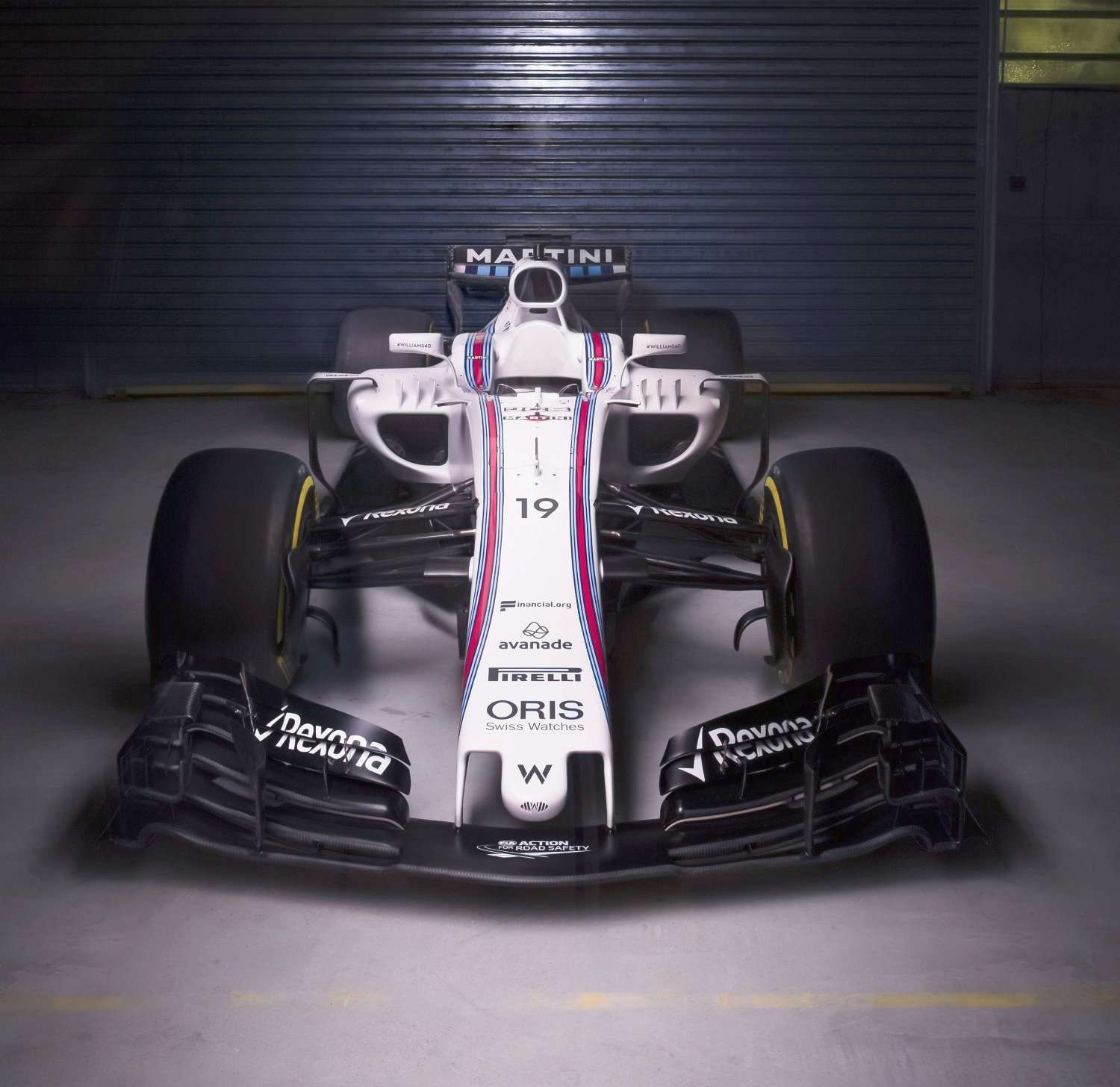Williams Reveals FW40 for 2017
 |
| Front View |
The Williams Mercedes FW40 was revealed online today ahead of pre-season testing in Barcelona. This is a precursor to the first pre-season test at the Circuit de Barcelona, where the car will be seen on track for the first time with Felipe Massa behind the wheel on Monday 27th February.
With the first race of the 2017 Formula One season just around the corner, it’s shaping up to be one of the most highly-anticipated seasons in recent memory.
The new regulations could shake up the grid as everyone tries to find the best solution to the new regulations. This season, we will see the return of wider tires, as well as revamped aerodynamics and a more physically demanding experience for the drivers.
Celebrating 40 years in the sport this year, the first image of the team’s 2017 challenger, the Williams Mercedes FW40, shows a very different look to 2016’s FW38.
This season we will see wider bodywork, wider front and rear wings, and fatter tires. As a result of this, there will be a significant increase in downforce and mechanical grip with the 2017 cars really able to attack the corners, significantly faster than they have done in recent years. That, in turn, means braking distances will be reduced and G-loading will increase.
[adinserter name="GOOGLE AD"]Drivers will be pushed to their limits physically, which is why a key focus for them over the winter has been on training hard in preparation, with the primary focus on upper body strength. With the increased downforce there comes an increase in drag, and in some cases a reduction in the higher top speeds we have seen in recent years. That doesn’t mean laptimes will increase though, quite the opposite.
Laptimes are predicted to fall and lap records are expected to be broken. To set blistering laptimes, teams will need some heavy duty rubber to stick to the track. Pirelli have certainly delivered that with the significantly wider front and rear tires. The front tires are 60mm wider, but the rear tires have increased by a staggering 80mm. This also poses a new challenge for the pit crew with heavier tires and modified wheel guns needed. Practice is underway as the team prepares to fight to keep its position as the fastest pit crew in Formula One.
In order to be quick out of the blocks, teams will need to understand the new tires, and do so quickly if they want to be, and remain, competitive. The team has increased its effort in this area which will hopefully mean it can start the season already having a good understanding of the new rubber. In-season tire testing will also be more crucial than ever before, as understanding the tires and how they work will be one of the key factors in pulling performance from the car.
 |
| Iso view |
Although cosmetically the 2017 cars will look very different to their 2016 predecessors, the core of the car, the power unit and the areas situated around the power unit, have not changed a great deal.
Barcelona’s pre-season testing will give teams the first real indication of how the cars are going to perform. But, similar to the engine regulation change in 2014, no one will have a real sense of the pecking order until we get to Melbourne. Even then, things can change extremely quickly, especially when the margins between success and failure are as slight as they are in Formula One.
WILLIAMS MERCEDES FW40
TECHNICAL SPECIFICATION
Chassis construction
Monocoque construction laminated from carbon epoxy and honeycomb surpassing FIA impact and strength requirements
Front suspension
Double wishbone, push-rod activated springs and anti-roll bar
Rear suspension
Double wishbone, pull-rod activated springs and anti-roll bar
Transmission
Williams eight speed seamless sequential semi-automatic shift plus reverse gear, gear selection electro-hydraulically actuated
Clutch
Carbon multi-plate
Dampers
Williams
Wheels
Apptech forged magnesium
 |
| FW40 |
Tires
Pirelli: Fronts: 305/670-13, Rears: 405/670-13
Brake system
AP 6 piston front and 4 piston rear calipers with carbon discs and pads
Steering
Williams power assisted rack and pinion
Fuel system
ATL Kevlar-reinforced rubber bladder
Electronic systems
FIA SECU standard electronic control unit
Cooling system
Aluminium oil, water and gearbox radiators
Cockpit
Six-point driver safety harness with 75mm shoulder straps & HANS system, removable anatomically formed carbon fibre seat
Power Unit
Mercedes-AMG F1 M08 EQ Power+, Internal Combustion Engine: Capacity 1.6 litres, Cylinders Six, Bank angle 90, No of valves 24, Max rpm ICE 15,000 rpm, Max fuel flow rate 100 kg/hour (above 10,500 rpm)
Fuel injection
High-pressure direct injection (max 500 bar, one injector/cylinder), Pressure charging Single-stage compressor and exhaust turbine on a common shaft, Max rpm exhaust turbine 125,000 rpm
ERS
Mercedes AMG HPP
Dimensions & weight
Weight: FIA Minimum Overall height: 950mm, Overall width: 2000mm​
